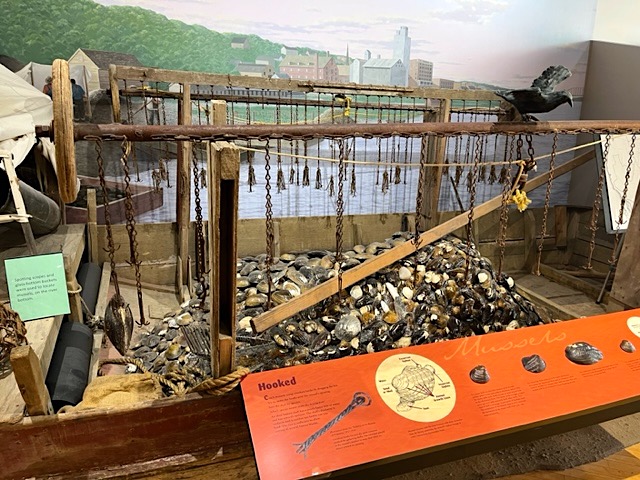
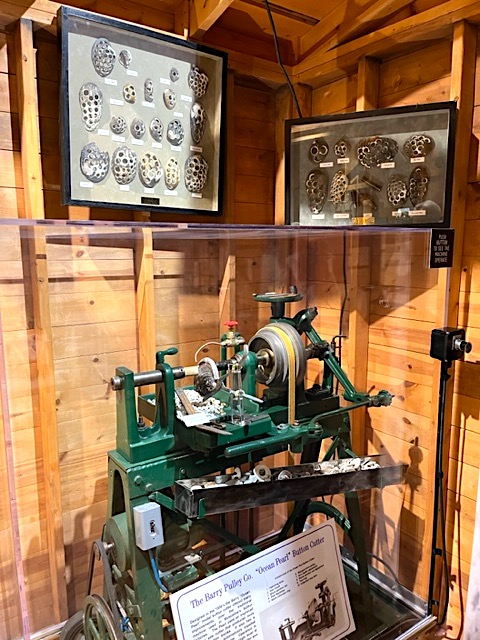
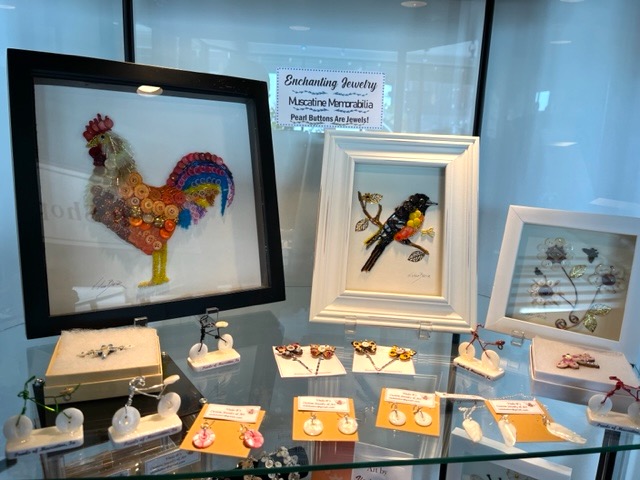
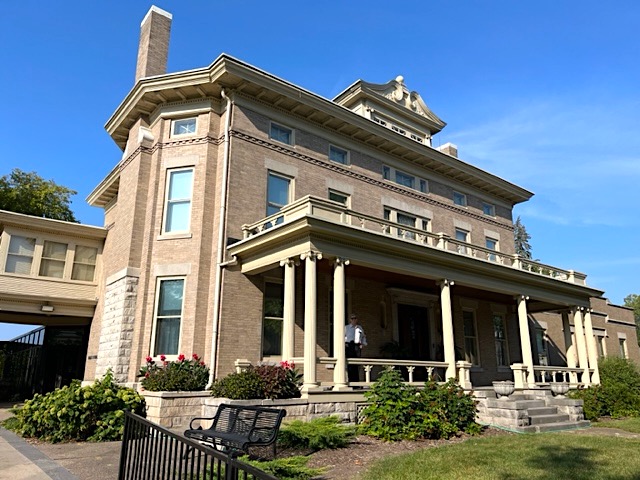
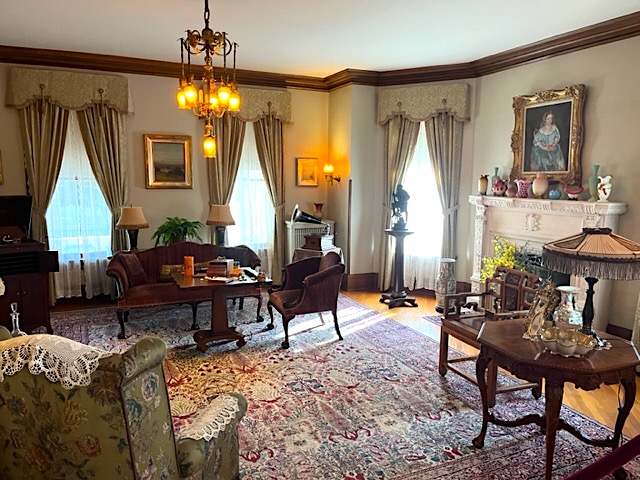
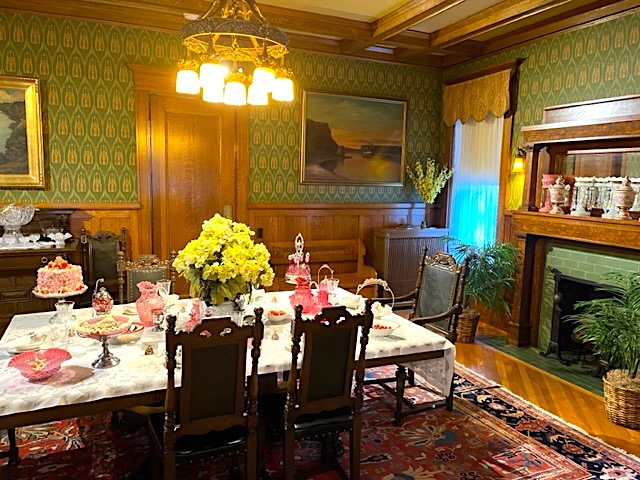
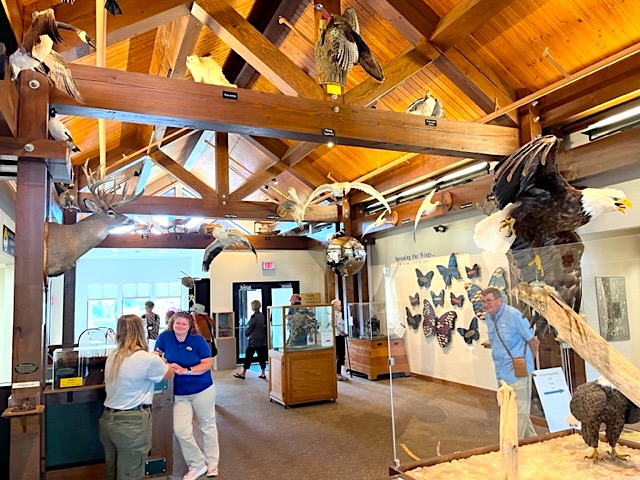
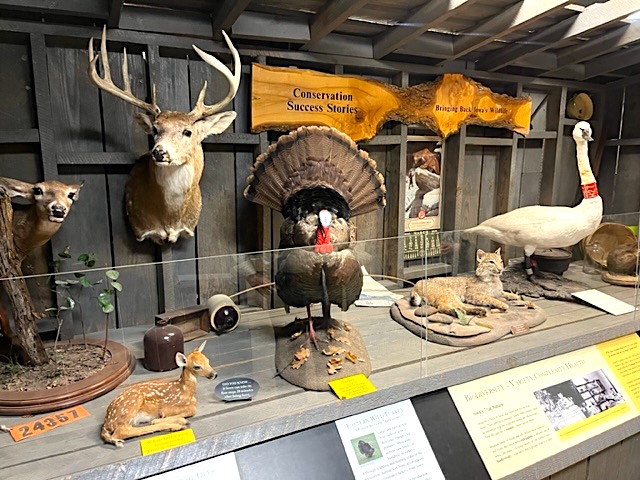
Muscatine, with a population of approximately 24,000 inhabitants, began as a trading post in 1833. The name Muscatine is believed to have come from the Mascoutin Native American tribe that lived along the Mississippi. From the 1840’s to the Civil War, Muscatine was home to Iowa’s largest black community, consisting of fugitive slaves who had traveled the Mississippi from the south and free blacks who had migrated from eastern states.
Our stop on this day took us to the National Pearl Button Museum to learn how Muscatine, Iowa, became the “Pearl Button Capital of the World” at the turn of the 20th Century. In 1884, German immigrant John F. Boepple immigrated to the US after international German tariffs put him out of business in Germany. The Mississippi river provided fresh water mussel shells suitable for button production, reigniting Boepple’s button business. By 1905, Muscatine’s factories were producing 1.5 billion pearl buttons annually. While this fantastic feat brought prosperity to the local economy and workers, the mussel harvesting came at an environmental cost. The creatures were nearly driven to extinction, as a result, the river’s quality was diminished. At the National Pearl Button Museum, stories of immigrants, entrepreneurs, and everyday workers are told through artifacts, photos, videos, and oral histories. In later years, not only were mussel buttons manufactured, but also plastic and other types of buttons. We enjoyed seeing the vintage machinery that was used to produce the buttons as well as the large collection of all types of buttons. The last of the button manufacturers finally closed in 2019.
Our next stop was at the Muscatine Art Center, located in the historic 1908 Musser Mansion and commissioned by lumber baron, Peter Musser, for his daughter Laura and her husband Edwin. In 1965 the mansion was donated to the city with some of the family’s furnishings for the use and enjoyment of the residents. The family also left an endowment, for as long as the funds would last, to maintain the residence. The two-story brick home is quite grand with spacious rooms, high ceilings and is beautifully furnished. Today, the residence not only shows off world renowned artists’ works through the family’s collection but also through traveling exhibits of art.
We then made a stop at the Muscatine County Environmental Learning Center to uncover the natural history of Muscatine and its environmental conservation efforts. This 10,500 sq. ft. facility is located in Discovery Park and features natural history exhibits including live reptiles, amphibians and fish local to the area. We saw how the wildlife habitats of Iowa have changed over the years, and experienced interactive hands-on displays. They have two 1200-gallon aquariums where you can see native species of fish and learn about over 100 mounted animals from Iowa. Outside, guests can visit the live raptor enclosure to meet local birds of prey.
Due to the distance to our next stop on the following day, our boat sailed at noon. Onboard activities in the afternoon included a lecture about the early explorers on the American rivers like Lewis Clark, a game show, and the liars club. Mark spent some time in the card room working on a 2,000-piece puzzle someone had started. The card room has lots of windows so it is easy to keep an eye on the river as we transited more locks, passed unique bridges and small towns. It was a lovely afternoon on the river.
The evening’s entertainment was a collection of music performed by the onboard band and the cruise director and his colleagues. They performed a variety of classic songs, mostly from the sixties, as well as some theater musical numbers. We gave them an “A” for effort and they appeared to be having a good time performing but some of the numbers lacked a little pizazz.
